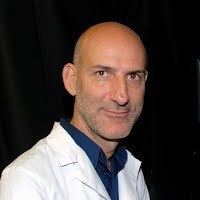Nationality Italian, American Residence London, United Kingdom | Education New York University Name Matteo Carandini | |
 | ||
Notable awards McKnight Scholar 2005, GlaxoSmithKline / Fight for Sight Chair 2007, European Research Council Advanced Investigator 2009, Wellcome Trust Senior Investigator, 2011 | ||
Matteo carandini looking for canonical neural computations in the visual system 2013
Matteo Carandini (born 1967) is a neuroscientist who studies the visual system. He received a PhD in Neural Science from New York University and continued as a postdoctoral fellow at Northwestern University. After holding positions in Zurich (1999–2002) and in San Francisco at the Smith-Kettlewell Eye Research Institute (2002–2008), he is currently a Professor at University College London, where he runs a joint laboratory with Kenneth D Harris.
Contents
- Matteo carandini looking for canonical neural computations in the visual system 2013
- Heller lecture 10 03 16 prof matteo carandini
- Achievements
- References
He studies the visual cortex at the level of individual neurons and populations of neurons, their intercommunication within the visual cortex, with a particular interest in the functions of the eye, thalamus, and the early visual areas of the cerebral cortex. Carandini conducts his research with the goal of contributing to the knowledge of how the brain processes visual information in the human brain and he works primarily with mice.
Heller lecture 10 03 16 prof matteo carandini
Achievements
In the 1990s, working with David Heeger and J. Anthony Movshon he refined and provided evidence for Heeger's normalization model of V1 responses.
Together with David Ferster he characterized the relationship between synaptic excitation, synaptic inhibition, membrane potential, and firing rate in visual cortex and discovered that prolonged visual stimulation causes a tonic hyperpolarization in V1 neurons.
More recent work concerns the characterization of fast adaptive mechanisms in the responses of the early visual system, a comparison with the properties of natural images and a test of the resulting models in the responses to complex natural stimuli. Other recent research projects include the use of optical and electrical imaging of cortical responses, population coding of visual stimuli, and the improvement of techniques for visual psychophysics in mice.
